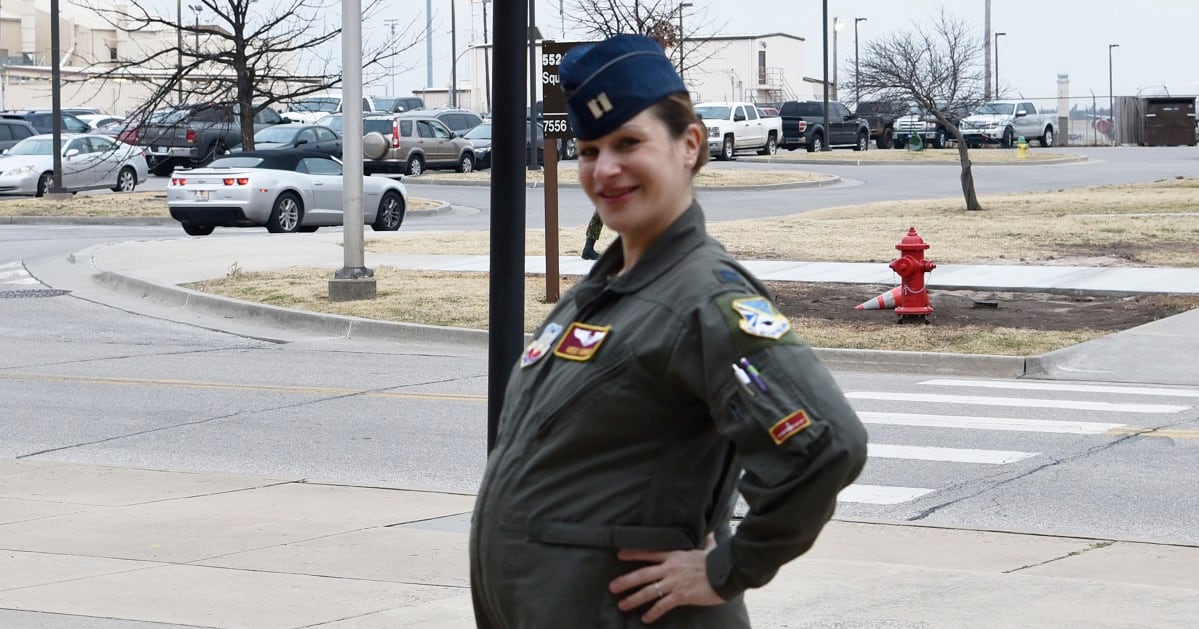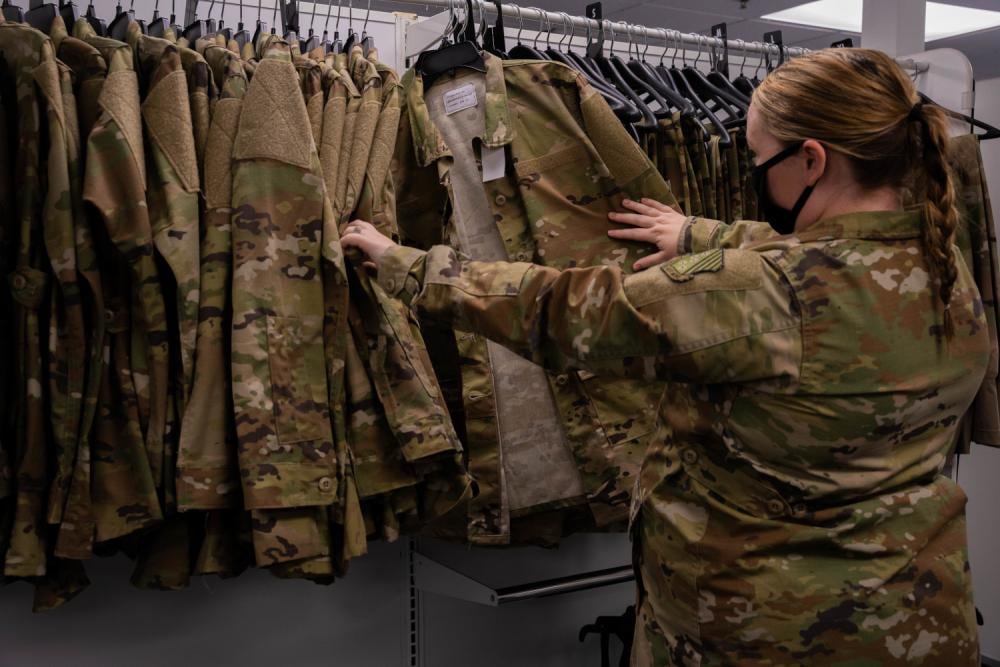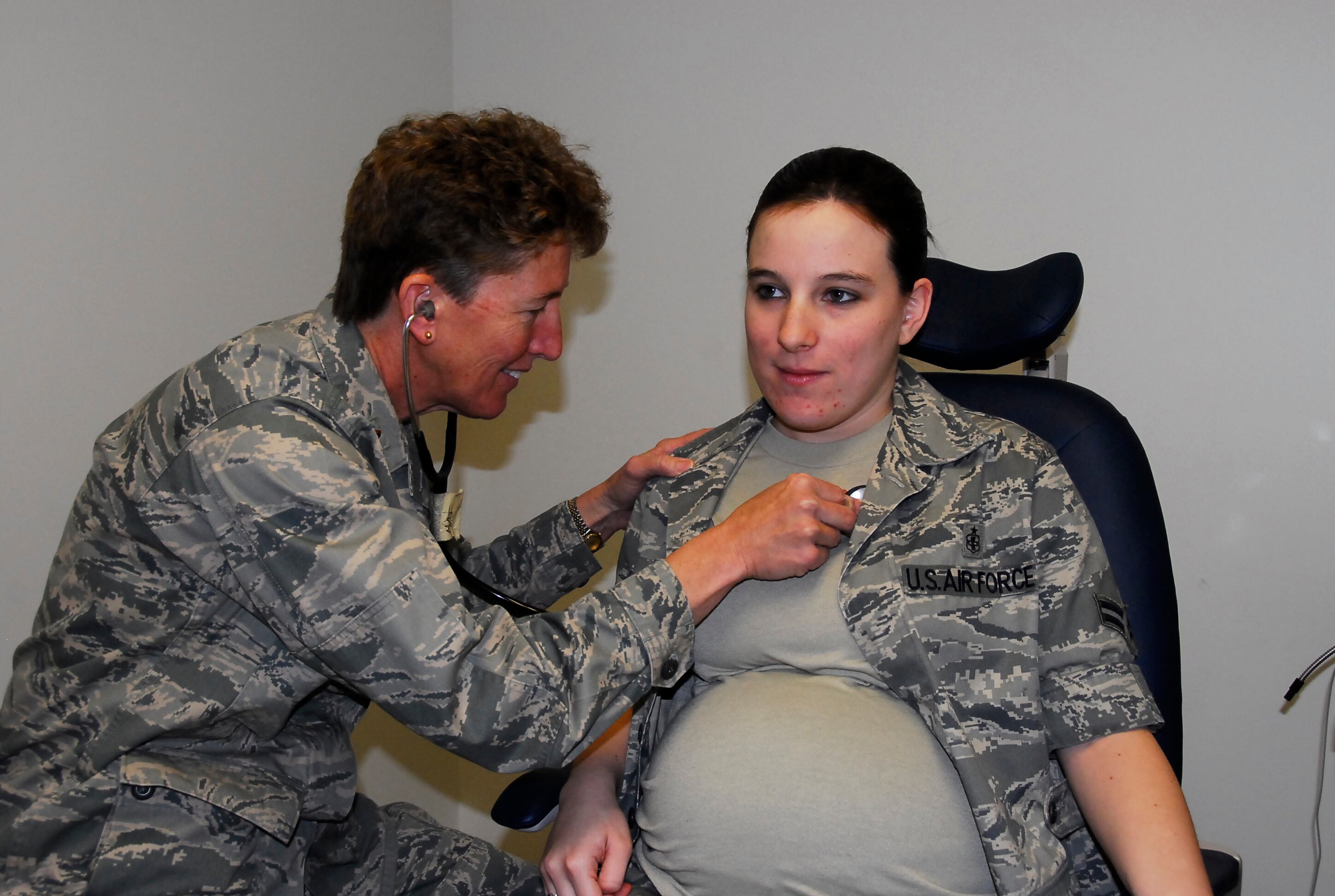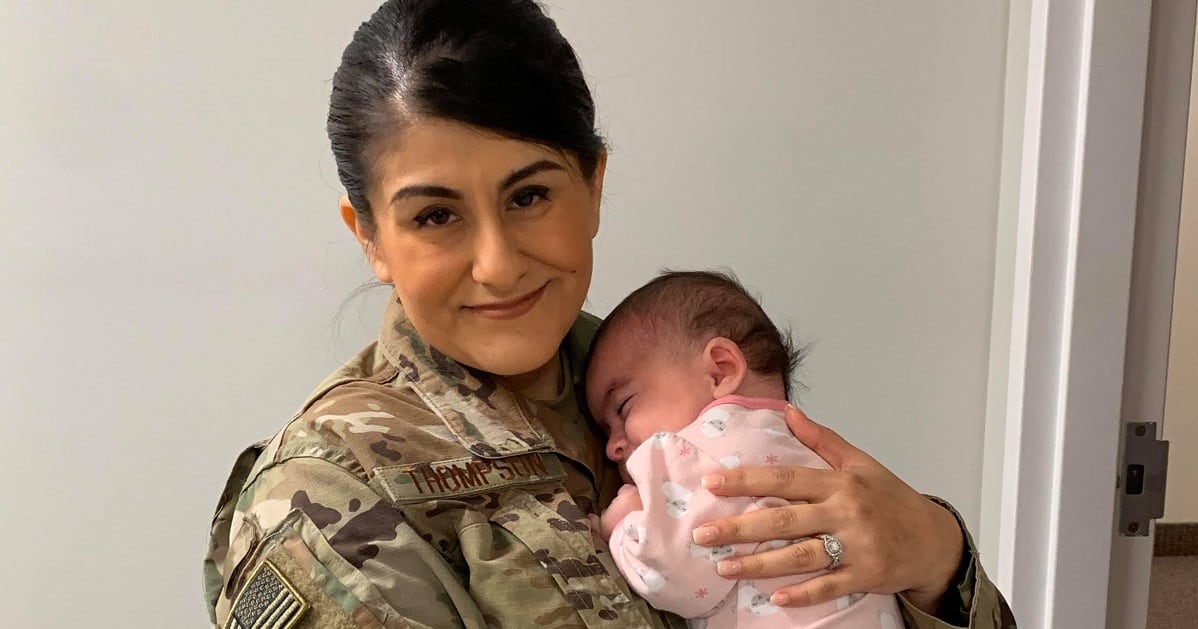More uniform options are on the way for moms-to-be in the Air Force, from two-piece maternity flight suits to wrap dresses.
Though women were integrated into the armed forces in 1948, it took 30 years before the military began to widely acknowledge the resources and policies they needed to succeed — particularly while pregnant. Women were automatically kicked out of the military when they became pregnant until the 1970s.
Now, the Air Force is trying to boost the number of women it recruits and retains by doing more to meet their unique needs. Female airmen are more likely than men to leave the service as they age because of the competing demands of pregnancy, caring for children and supporting other family members.
The uniform office is creating maternity-specific clothing so women will no longer have to buy or borrow larger, ill-fitting or worn out flight suits. Many women try to alter those uniforms themselves, said Tracy Roan, who runs the uniform office at Wright-Patterson Air Force Base, Ohio.
Women “are a valuable part of our daily mission,” she said. “We want to make sure the pregnancy doesn’t change how they’re able to perform their job, and that they feel good about the way that they look while they’re doing it.”
The Air Force spent $540,000 to create 2,000 one-piece maternity flight suits that will begin rolling out in April, Roan said. Their Navy counterparts took part in creating the uniform as well, and debuted a prototype in July 2021.
One-piece suits are popular among airmen who fly certain aircraft, including fighter jets, in part because of culture and because of comfort and safety considerations. Owning a one-piece suit of their own can also help foster a sense of belonging and unity at a time when female airmen may feel increasingly different from their peers.
“Pregnant females are not permitted, at a certain point based on medical approvals, to fly,” Roan said. “But they may still choose to wear a one-piece because everyone in their unit is wearing their one-piece.”
RELATED

Another maternity flight suit — a two-piece version — is following close behind.
The uniform is a maternity version of the advanced aircrew combat outfit worn by the Army and Air Force, Roan said. That style offers protection against fires that may unexpectedly ignite in the course of military operations. A drawstring at the bottom of the coat helps to fireproof the outfit by cinching closed under a woman’s swollen belly.
Women in non-flying jobs who already wear that uniform, like nuclear missileers, can benefit from the update as well, Roan added.
Airmen have already weighed in on how the garment fits, and the service is calling for volunteers to test how it holds up in everyday life. They’ll make any needed alterations afterward and expect to hand it off to the Defense Logistics Agency for distribution in 2023, though that may be delayed.
Female airmen can now fly into their second trimester without a medical waiver, meaning they need comfortable flight suits for several more weeks. Designers prioritized the one-piece uniform because it was easier to get across the finish line, Roan said, and because they weren’t sure how the two-piece version would perform in burn testing.
“We knew that [two-piece] development might take a little longer and, with the change in policy allowing the aircrew to fly during their pregnancy longer, we wanted to get something out in the field as quickly as we could,” she added of the one-piece uniform.
RELATED

Work on earlier maternity clothing, like testing a revamped dress shirt in 2018, taught the Air Force to create a more flattering silhouette by tailoring the back tighter than the front. They applied that lesson in designing the one- and two-piece flight suits as well.
Structuring clothing that way gives women more flexibility as their bodies change throughout their pregnancy, Roan said. They’ve added wider hips and room for “extra fluff” without repeating past ideas like a shapeless smock dress.
“You don’t feel as bad because you’re not wearing this big tent-like garment,” she said. “Especially in flight, you don’t want any excess that could be a snag hazard.”
For over a year, the uniform office has offered to add football-shaped panels that expand regular flight suits into maternity versions until replacements are available. They get a couple of requests each week for two or three updated uniforms as more women become aware of that service.
The Air Force also wants to revamp more than flight suits in its maternity line.
It’s considering a wrap dress that would replace the current jumper, plus a tunic-like jacket to wear with pants or skirts, Roan said. The service hasn’t yet hashed out maternity options for the Air Force’s new workout clothes.
RELATED

For all female airmen, an improved skirt is in the works, as well as mess dress slacks in women’s sizes. Women are already allowed to wear pants with their mess dress uniforms, but must buy men’s slacks and alter them to fit.
Researchers at Tinker Air Force Base, Oklahoma, are likewise creating a database of measurements for all women’s uniforms. Instead of using men’s measurements as the baseline, that information can lead to better fitting, more functional clothing, body armor and other lifesaving equipment.
However, longstanding supply chain woes are threatening to slow how soon airmen could see new uniforms in their closets.
“All of our uniforms are made from domestic materials, and domestic manufacturers were already struggling,” she said. “Most other retailers are sourcing outside of the country, and a lot of people either don’t have an interest in sewing or working in a facility, or don’t have the skill set.
RELATED

Problems in the clothing and textiles industry aren’t expected to interfere with putting out the one-piece flight suit, but it’s too soon to tell how they will affect the two-piece version, Roan said.
She declined to speculate about when the wrap dress and tunic could become available. The military’s wool fabric manufacturer plans to slash its available fabric supply for the next 18 months, sending ripple effects throughout the production process.
“It’s probably not a good time right now to throw something new at them,” she said.
Rachel Cohen is the editor of Air Force Times. She joined the publication as its senior reporter in March 2021. Her work has appeared in the Washington Post, the Frederick News-Post (Md.), Air and Space Forces Magazine, Inside Defense, Inside Health Policy and elsewhere.




